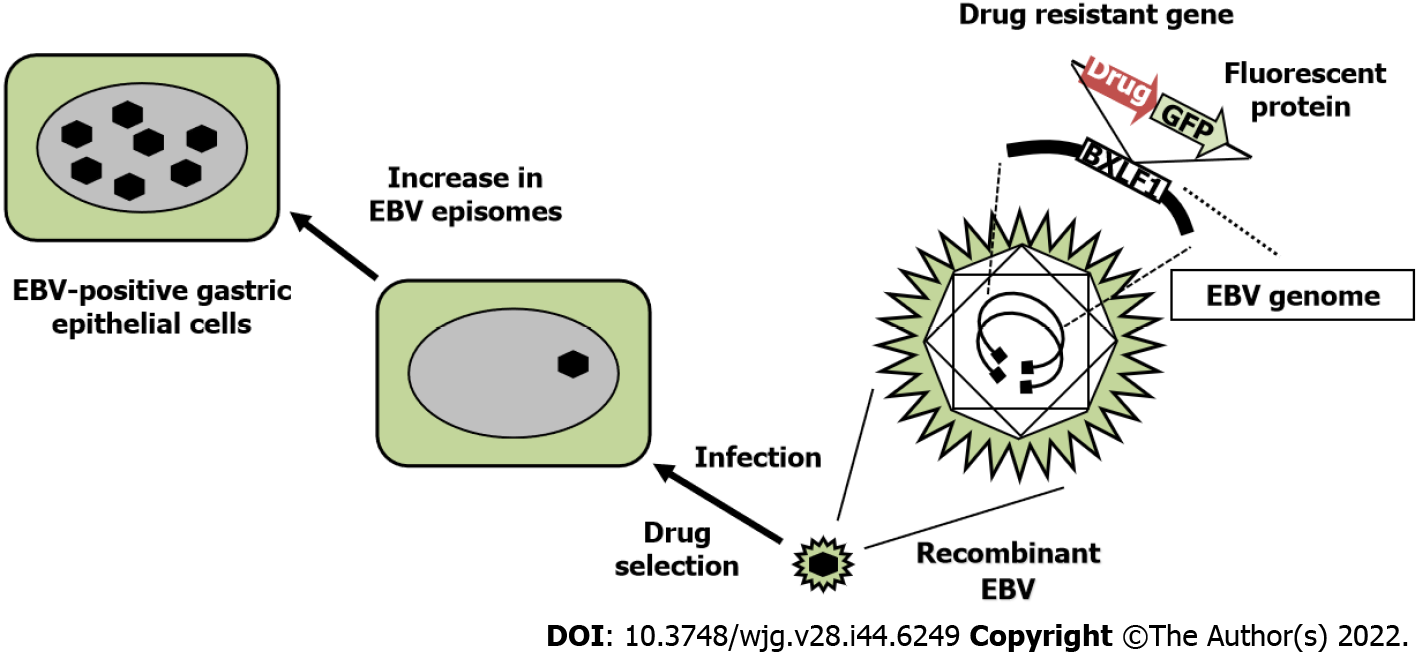Copyright
©The Author(s) 2022.
World J Gastroenterol. Nov 28, 2022; 28(44): 6249-6257
Published online Nov 28, 2022. doi: 10.3748/wjg.v28.i44.6249
Published online Nov 28, 2022. doi: 10.3748/wjg.v28.i44.6249
Figure 2 Isolation of recombinant Epstein-Barr virus-infected gastric epithelial cells.
A drug resistant gene and fluorescent protein gene were inserted into the viral genome (BXLF1) using gene recombination technique. BXLF1 is an EBV gene that does not affect viral production or infectivity by disruption through the insertion of marker genes. It is possible to isolate only recombinant virus-infected cells by infecting cells with a recombinant virus and selecting them for a drug. When recombinant virus-infected cells are cultured in the presence of the drug, the viral plasmid copy number in the nucleus of infected cells increases[52]. EBV: Epstein-Barr virus; GFP: Green fluorescent protein.
- Citation: Iizasa H, Kartika AV, Fekadu S, Okada S, Onomura D, Wadi AFAA, Khatun MM, Moe TM, Nishikawa J, Yoshiyama H. Development of Epstein-Barr virus-associated gastric cancer: Infection, inflammation, and oncogenesis. World J Gastroenterol 2022; 28(44): 6249-6257
- URL: https://www.wjgnet.com/1007-9327/full/v28/i44/6249.htm
- DOI: https://dx.doi.org/10.3748/wjg.v28.i44.6249









